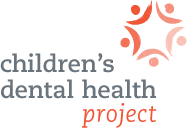The Children's Dental Health Project's blog
Spotlighting family-centered solutions at the National Oral Health Conference
I had the distinct honor of moderating the opening plenary for the 2019 National Oral Health Conference (NOHC). The plenary, organized by CDHP, was a facilitated discussion aimed at framing oral health in a new light compared to conferences of years past. Rather than focus on traditional topics like improving basic utilization of dental care, the panel framed oral health through a broader multi-generational lens.
Our conversation covered key issues such as:
- the shortcomings of the dental care system’s isolation
- how oral health is connected to and influences overall well-being and family success, and
- the fact that meeting a child’s oral health needs requires addressing the needs of their entire family.
I was glad to be joined by colleagues with expertise in oral health and family, economic, and public policy research. Panelists included Cassie Yarbrough of the American Dental Association’s Health Policy Institute (HPI); health economist Dr. Jill Herndon; and Dr. Christie Custodio-Lumsden, Adjunct Assistant Professor at Columbia University, Teachers College.
"Oral health is inextricably linked to other barriers to socioeconomic success. ...It is insufficient to treat children’s oral health, or even oral health in general, in isolation."
During our discussion, Cassie shared insights into the ways in which our dental care system is “stuck.” She spoke to the need to move toward a health system that meets people where they are and address the oral health of parents and caregivers. To do that effectively, we must also shift our data system. Cassie noted that currently, we mostly measure what dental services we use or types of coverage people have — but don’t necessarily have good data to show if they make our lives healthier or happier. We need to measure for improvements in health and well-being. Cassie also highlighted HPI’s survey which found that oral health problems impacted low-income adults’ ability to seek employment.
Drawing on her scan of existing research, Jill discussed the connections between oral health and economic mobility, self-image, mental health, substance abuse. These issues can be impacted by — but can also shape — our oral health. For example, mental illness is associated with greater tooth loss and dental decay. In fact, an article published just days after the conference indicates that periodontal disease may worsen the impact of depression on birth outcomes. Like other factors generally considered to be social determinants of health, they are distinct but also interrelated.
Christie further emphasized how oral health is inextricably linked to other barriers to socioeconomic success. She has helped lead on-the-ground studies examining the effectiveness of community health workers to improve family oral health through dietary and behavior change. This research helped shine a light on the fact that such interventions require addressing a host of “wicked problems” — that is, those complex problems of physical and social well-being that require multi-faceted solutions. Housing and food security, in addition to oral health, are some examples.
Across the board, the panel agreed that it is insufficient to treat children’s oral health, or even oral health in general, in isolation. We also each acknowledged that additional research is needed to strengthen the connections between oral health and family/community prosperity. The upcoming Surgeon General’s report on oral health represents a step in the right direction in this regard. It will be a significant opportunity to frame the importance of oral health beyond the clinical realm.
In addition to the plenary, I participated in a panel on oral health during pregnancy along with colleagues from the U.S. Centers for Disease Control and Prevention (CDC) and American Academy of Pediatrics. These partners have jointly released a new toolkit for medical and dental providers and patients aimed at improving access to care for pregnant women and new moms, and to help parents keep kids cavity-free.
During that session, I was also able to showcase some of CDHP’s recent work on oral health for pregnant women and new mothers. In working with lawmakers, it’s clear that more officials are understanding the need to prioritize pregnant women’s oral health. Members of Congress recently re-introduced maternal health legislation, the MOMMA Act, which includes crucial oral health provisions.
Beyond the presentations in which CDHP staff were involved, the content at this year’s NOHC focused heavily on strategies to better integrate oral health into the broader health care system. That remains a longstanding priority for CDHP and its partners. We look forward to capitalizing on opportunities to share our expertise with others and identify new strategies to eliminate poor oral health as a barrier for children and families.
